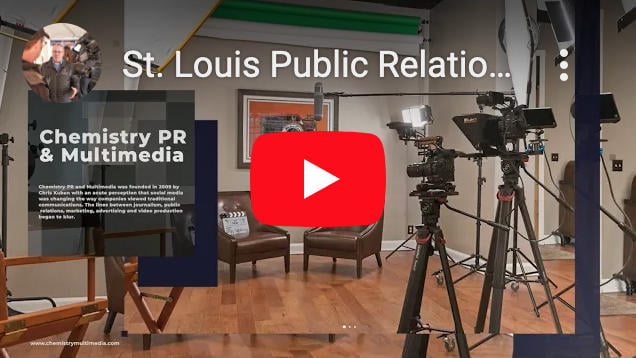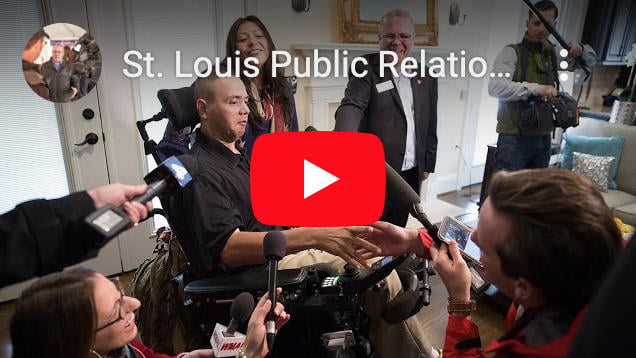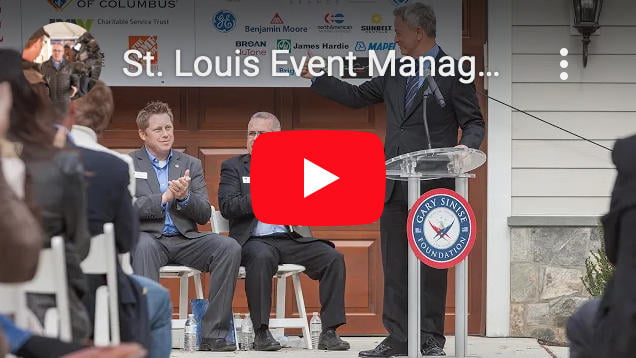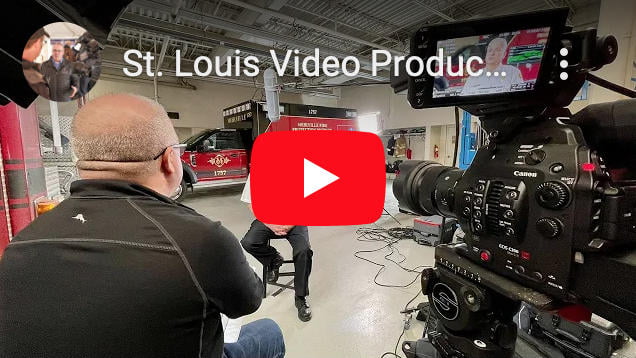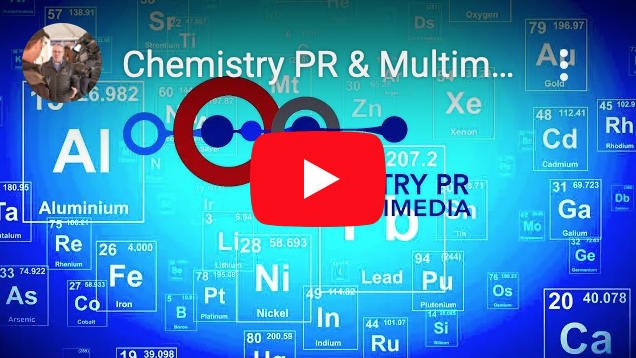The State of Public Relations by St. Louis Public Relations Firm
Chemistry PR and Multimedia, a St. Louis Public Relations Firm, attests that the Public Relations and communications industry is changing faster than ever. As an industry, we must understand our past to prepare for what’s coming. That change is now happening at lightning speed. Let’s dive in…
For the last hundred years, since the rise of first radio and then television, the ability to conduct a successful media appearance has been a critical skill for leaders. In the 1960 Nixon/Kennedy presidential, radio listeners declared Nixon the winner while TV viewers declared Kennedy the winner highlighted the important differences between two of the three major media types.
But a landscape once dominated by print, radio, and TV, with just three major broadcast outlets has changed over the last couple decades with the rise of the internet, social media, and content driven platforms. As the appetite and need for content has increased, the level of trust the public holds for traditional media is eroding – The level of credibility, trustworthiness, and honesty in presenting facts by anyone with a keyboard has eroded our society’s base of reality. It’s now more critical than ever to control your message and polish your delivery to help ensure that you and your brand come across as sincere and trustworthy.
The last two years have been dramatically marked by the COVID-19 pandemic and more changes in the media and PR industries are underway. While the changes are many, most fall within one of four broad categories:
- Changing audiences and audience habits
- The rising importance of data and technology
- The emphasis on personal connection and authenticity amidst rising misinformation
- Algorithm driven community content distribution
Audience Changes
By now, it’s almost cliché to talk about the generational shifts happening in every industry. As baby boomers age and reach retirement, Gen-X and Millennials are rising through the ranks of management stepping into leadership roles, while Generation Z is starting to enter the workforce.
Generation Z is the first generation who has never known life without the internet. Close to 100 percent of them in the United States of have cell phones they routinely check, adding up to several hours spent online every day. Generation Z also knows how to mobilize social networks to advance causes they care about, so understanding their interests and concerns as a target consumer audience is critical and shouldn’t be dismissed.
The ‘Z’ generation places a high value on diversity and inclusion. Populations are shifting, demographics are changing, and the internet is reaching people across the globe in real time. With these changes come new perspectives and new ideas that will need to be genuinely welcomed and embraced. Companies will have to demonstrate their values, rather than merely making empty gestures and saying the “right” things.
In recent years, additional changes have come about in response to the COVID-19 pandemic. As more people work from home or remotely, lifestyle habits are changing. Many people, including journalists, are working non-typical office hours. As PR Lab pointed out in its list of 2022 PR Trends, some journalists are changing their schedules as the lines between work and home blur. So, if you want to connect with them, you might have to get creative in how and when you reach out!

Data and Technology
The shift to working from home that grew out of the pandemic wouldn’t have been possible if it hadn’t been for the technology available. And it’s highly likely that some of the changes that this technology ushered in will stick around. Simplistic solutions that exploded were Zoom and Teams.
Even though many people are optimistic about returning to in-person events, some conventions and conferences are planning to integrate hybrid event components moving forward so guests who are unable to travel can still attend virtually. Costs of these solutions have become more affordable to companies of any size.
Meanwhile, media and technology continue to intertwine as news continues to spread via social media channels, while artificial intelligence and data research mean newsfeeds are personalized and customized to reflect the interests of each reader.
Because technologies in iPhones and Androids have capabilities of shooting 4k quality, anyone/everyone can shoot video for traditional and multimedia purposes, making it easier for forward thinking organizations to capitalize on generating exposure.
Authenticity and Misinformation
In recent years, the connection between social media, news, and audiences have become increasingly uneasy. With algorithm-based newsfeeds giving social audiences stories they are interested in and filtering out angles and points of view with which they disagree, there has been increasing concern that media is becoming an echo chamber as each person has their viewpoints and opinions validated time and again. The result is the public’s greater distrust of certain media outlets and greater reliance on others as truthful and reliable sources.
Adding to this distrust is the continued blurring of the lines between paid and earned media. Contributed articles, sponsored posts, and influencer marketing are all options companies pay for to promote their products. Often this content is labeled as an advertisement or sponsored content, but when you scroll through your newsfeed, it’s often easy to overlook those hits.
For these reasons, authenticity is the name of the game in PR today. But what does it mean to be “authentic” in this context? It means not only stating your values in your communication materials but making sure that you demonstrate those values. And it means transparency. When a company does make a mistake and violates its stated values, it should accept fault and work to make amends.
Thanks to social media platforms, such as Twitter, Reddit, Facebook, nextdoor and others, it’s easier than ever for audiences to call companies out on their lack of authenticity. Every day, news sites carry stories of public response to an action one company has taken or to a public statement another company has made.
Algorithm Driven Community Content Distribution

This is basically a fancy term for content that individual creators (individuals, spokespeople, influencers, politicians, celebrities, etc.) make where their content is then potentially pushed to mass audiences based upon its’ content value.
For example, the TikTok platform pushes recommend content based upon on a user’s previous interactions (likes, shares, comments) to predict what a client likes or doesn’t like. This prediction is made on a complex series of analytical data that includes language, accounts you follow or hidden, comments you’ve posted, videos you like or uploaded, content you’ve flagged and can even dial down to the sound or trending topics, effects, captions or hashtags and the length of your viewer habits based upon. Therefore, anybody creating content can go ‘viral’ and be seen by millions, at any time. When this happens, it’s almost like winning the jackpot – individuals become famous overnight.
With so many creators and such large audiences (more than half of the world’s 4.5 billion internet users are on social media), there needs to be a way to control the traffic and determine who sees what content. Therefore, when influencers post on algorithm driven content, they also post their content on their social media properties as well which is a way to reinforce their brand to the current followers.
Algorithms are mathematical formulas that social media companies use to determine which types of content their users are most interested and push that content within your network. But they’re tricky because, in their efforts to put the best quality content in front of the most interested users, the algorithms needs to change almost like a breathing organism. So, for those of us working in marketing, it’s hard to try and keep up!
These algorithms also mean that organic reach – or the idea that content you produce will automatically reach people who have elected to follow you – is on the decline. Even if a person follows you, if they’re not engaging with your content through likes, shares, comments, etc., eventually they will see less and less of your content. And, this is where the networks make their money.
Paid content is becoming ever more important – but even paid content is still filtered based on engagement. A customer can perfectly fit the profile you choose but if they don’t typically engage with the kind of content you produce, there’s a smaller chance they’ll ever see it.
If you’re serious about building a brand, individually or for a larger purpose/organization, you’ll have to fully engage in research to identify audience receptiveness, plan accordingly, implement the strategy and then evaluate its’ effectiveness. The state of our communications industry is changing at lightning speed. Therefore, you must use the RPIE strategy to identify what’s favorable to your organization – RPIE stands for Researching, Planning, Implementation and Evaluation Programs.
This post is the first in a series by which our team at Chemistry PR & Multimedia plans to explore the ever-changing landscape of media and public relations and give you the tools needed to successfully navigate it. While media is no longer dominated solely by print, television, and radio, we’ll look at how the principles that have guided our industry for the last century continue to have relevance. And whether you’re new to the field or simply want to brush up your media relations skills, we hope you’ll find something in our writing that will help you effectively execute your communication role. In addition, if you are in an advisory role to train others, we hope our writings will help guide you in your effort to teach others industry best practices.
 Chris Kuban started Chemistry PR and Multimedia with a vision to effectively formulate corporate and non-profit brands across the country. He is an expert in Media Relations, Event Management and video production. Working with a team of local and national suppliers, vendors, employees, and consultants has allowed him to coordinate more than 246 national events that help deliver the ROI his clients seek. Follow him on Twitter or connect with him on LinkedIn. Chris is proud that his firm is ranked one of the Best St. Louis Public Relations Firms in the region.
Chris Kuban started Chemistry PR and Multimedia with a vision to effectively formulate corporate and non-profit brands across the country. He is an expert in Media Relations, Event Management and video production. Working with a team of local and national suppliers, vendors, employees, and consultants has allowed him to coordinate more than 246 national events that help deliver the ROI his clients seek. Follow him on Twitter or connect with him on LinkedIn. Chris is proud that his firm is ranked one of the Best St. Louis Public Relations Firms in the region.




